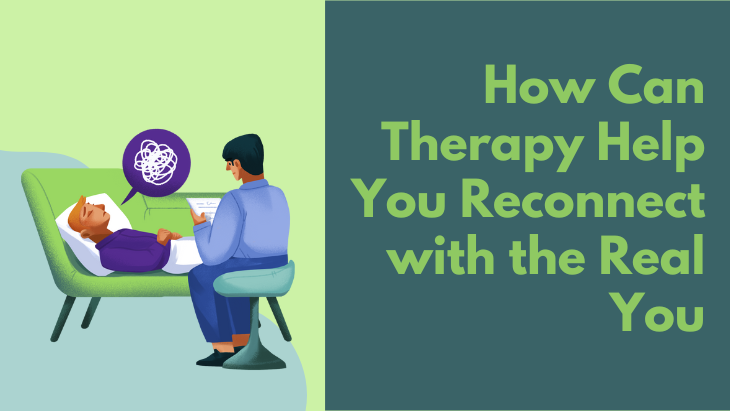Workplaces in Canada have changed significantly recently, not only in terms of where and how people work, but also in terms of how companies value the welfare of their employees. The emergence of digital therapy as a vital part of workplace support has been one of the biggest shifts. People increasingly view mental health care as a strategic necessity, not just a benefit or perk. Best Online Therapy Platform For Enterprises As businesses concentrate on changing workspaces, innovative designs for office spaces are now being matched by equally creative wellness approaches, with digital therapy setting the standard.
Why businesses should prioritise mental health.
For many years, the main considerations in office design were efficiency and physical comfort. The modern workforce seeks supportive environments that foster both productivity and mental health; they don't settle for a desk and a paycheck. This change has prompted progressive Canadian businesses to investigate real-time tools that promote employee wellness. Digital therapy platforms have therefore become a potent remedy, providing confidential, easily accessible, and stigma-free mental health care from the comfort of one's own home or place of employment.
The Impact of the Pandemic on the Normalisation of Digital Therapy
Although mental health has always been crucial, the COVID-19 pandemic made clear how precarious it can be to strike a balance between work and well-being. Across all industries, anxiety, loneliness, burnout, and emotional exhaustion became prevalent. As a result, numerous Canadian organisations started providing their teams with online therapy. A long-term solution has emerged from what began as a short-term support measure. While employers saw the business benefits of a more resilient and supportive workforce, employees recognised the value of on-demand mental health access. Digital therapy is now a proactive investment rather than merely a crisis response.
Smooth Incorporation into the Workday
The smooth integration of digital therapy into everyday routines is one of the reasons it has been so successful in Canadian workplaces. Digital platforms provide sessions that fit into a lunch break or before or after hours, in contrast to traditional therapy, which might necessitate time off and travel. Workers can use smart office kiosks, laptops, or even their phones to access services. It is simpler to get help early thanks to this accessibility, before stress turns into burnout or disengagement. Innovative office design solutions are now being combined with equally innovative mental health tools that are as adaptable as the modern workday, as businesses continue to transform workspaces.
Reduced Stigma and Confidentiality
In many professional contexts, stigma around mental health persists despite increased awareness. Digital therapy allows employees to express their concerns in a private, judgment-free environment without fear of public scrutiny. Users can rest assured that their conversations are safe because platforms are built with stringent data privacy and confidentiality protocols. Encouraging participation requires this trust. Businesses can help normalise mental health care and create a culture where asking for help is seen as a strength rather than a weakness by incorporating digital therapy into workplace wellness initiatives.
Measurable Effects on Retention and Performance
Digital therapy is already producing noticeable results for Canadian businesses that have incorporated it into their wellness initiatives. Workers who make use of mental health resources report increased job satisfaction, increased engagement, and improved concentration. Employers gain a stronger corporate culture, lower absenteeism, and lower turnover rates as a result. Organisations that provide comprehensive mental health support, including digital therapy, have a higher chance of retaining top talent and sustaining team morale, per recent workplace studies. Digital therapy, when paired with creative office space design solutions, transforms workspaces and produces a high-performing environment that supports the body and mind.
Individualisation and Choice in Healthcare
One of the most beneficial features of digital therapy is its ability to tailor to each patient's needs. Depending on their comfort levels and objectives, users can select from self-guided programmes, mindfulness exercises, video sessions, or chat therapy. Employees can participate in therapy in a way that feels comfortable and non-disruptive thanks to this variety. To provide a more individualised experience, AI-driven platforms can even suggest resources based on usage history and mood tracking. Businesses are now customising wellness support through dynamic digital solutions, just as they customise their physical spaces through creative design.
Creating Teams That Are Resilient in a Fast-Paced Environment
The modern workplace requires emotional fortitude, creativity, and flexibility. Workers deal with hybrid work challenges, strict deadlines, and ongoing change. Teams can effectively communicate, manage stress, and recover from setbacks with the help of digital therapy. Digitally accessible mental health workshops, resilience training, and group counselling assist teams in gaining the psychological adaptability they need to succeed. In this sense, digital therapy is a tool for fostering long-term emotional resilience within the company, not just for crisis management.
Connecting innovation in the workplace with well-being
Businesses are adopting a more human-centric approach to work as they redesign their workspaces to include biophilic features, wellness areas, quiet pods, and collaboration hubs. However, mere physical space is insufficient. When design and mental health work together, real change occurs. Businesses are approaching employee experience holistically by incorporating digital therapy platforms into their overall strategy. Workspaces are being transformed: creative office space design solutions are now complemented by equally considerate digital wellness initiatives, resulting in a setting that promotes mental, emotional, and physical well-being.
Conclusion
Digital therapy has subtly emerged as a key component of Canada's most prosperous and progressive workplaces. Optisych-Care It supports leadership, empowers workers, and perfectly fits the changing needs of contemporary work. The ability to offer on-demand mental health support is becoming necessary as the boundaries between personal and professional life become increasingly hazy. Businesses that put emotional health first and transform workspaces with innovative office designs are creating teams that are resilient, engaged, and prepared for the future. Digital therapy is not only a benefit but also a competitive advantage in the era of emotional intelligence.






Post Comments